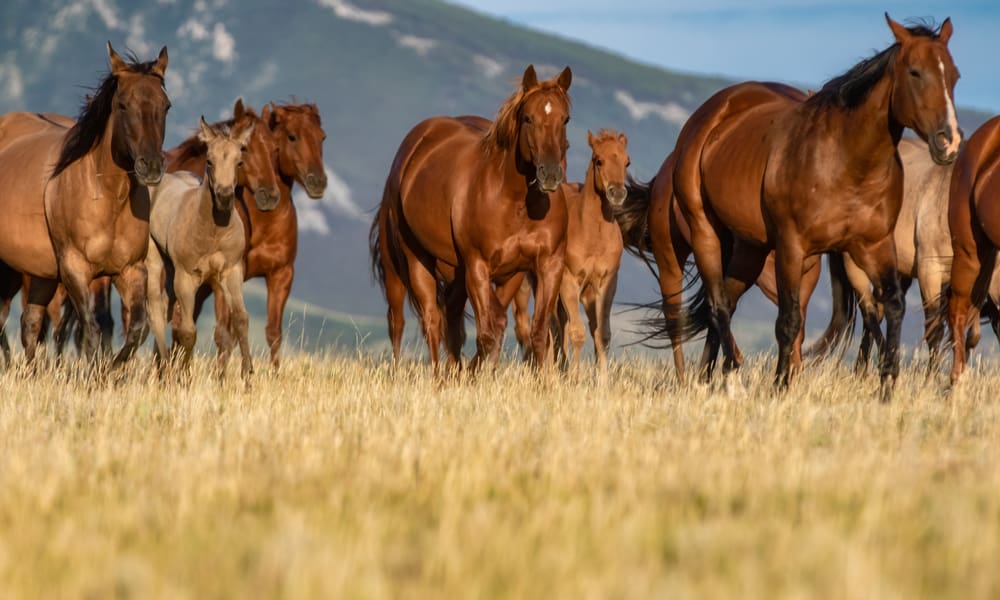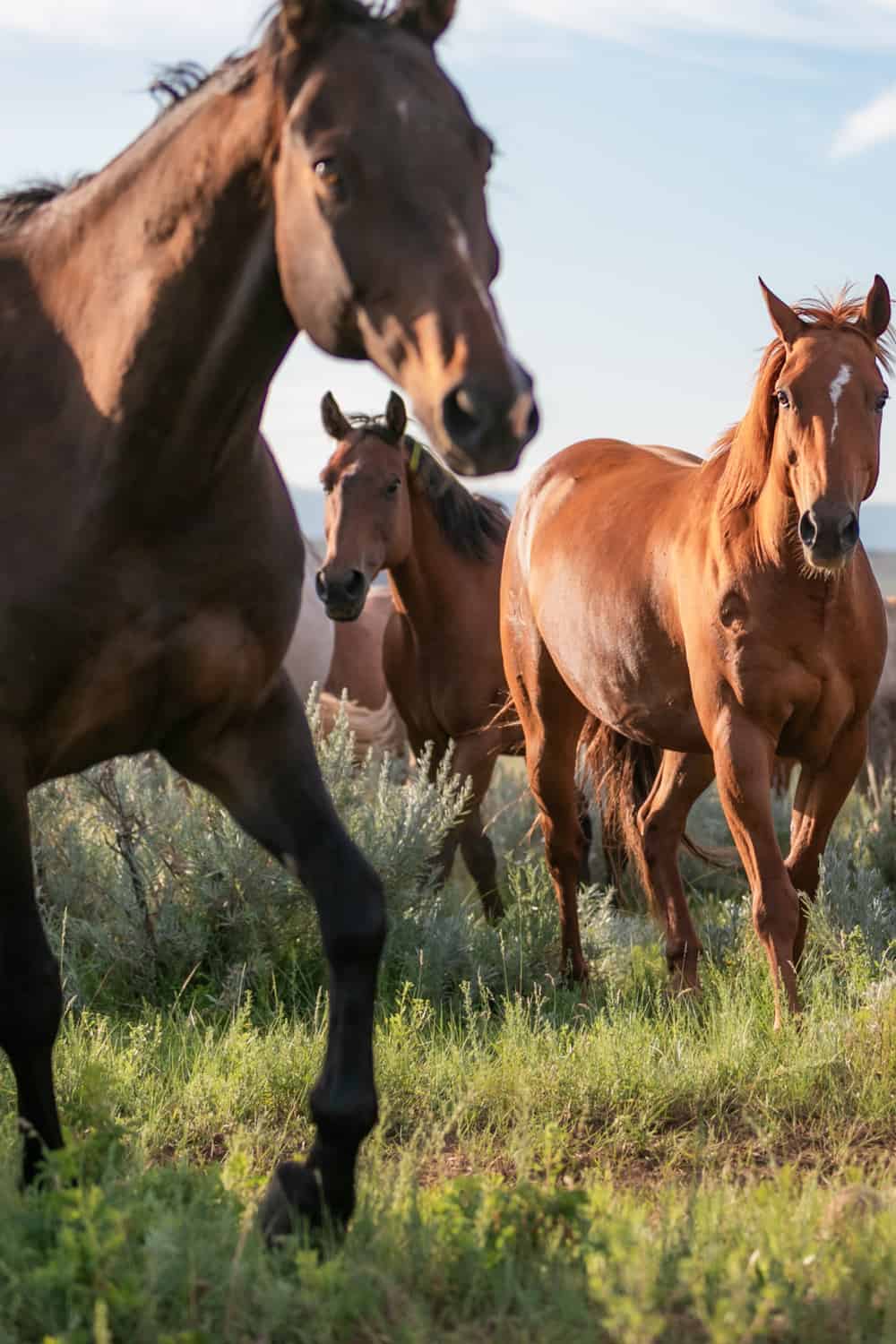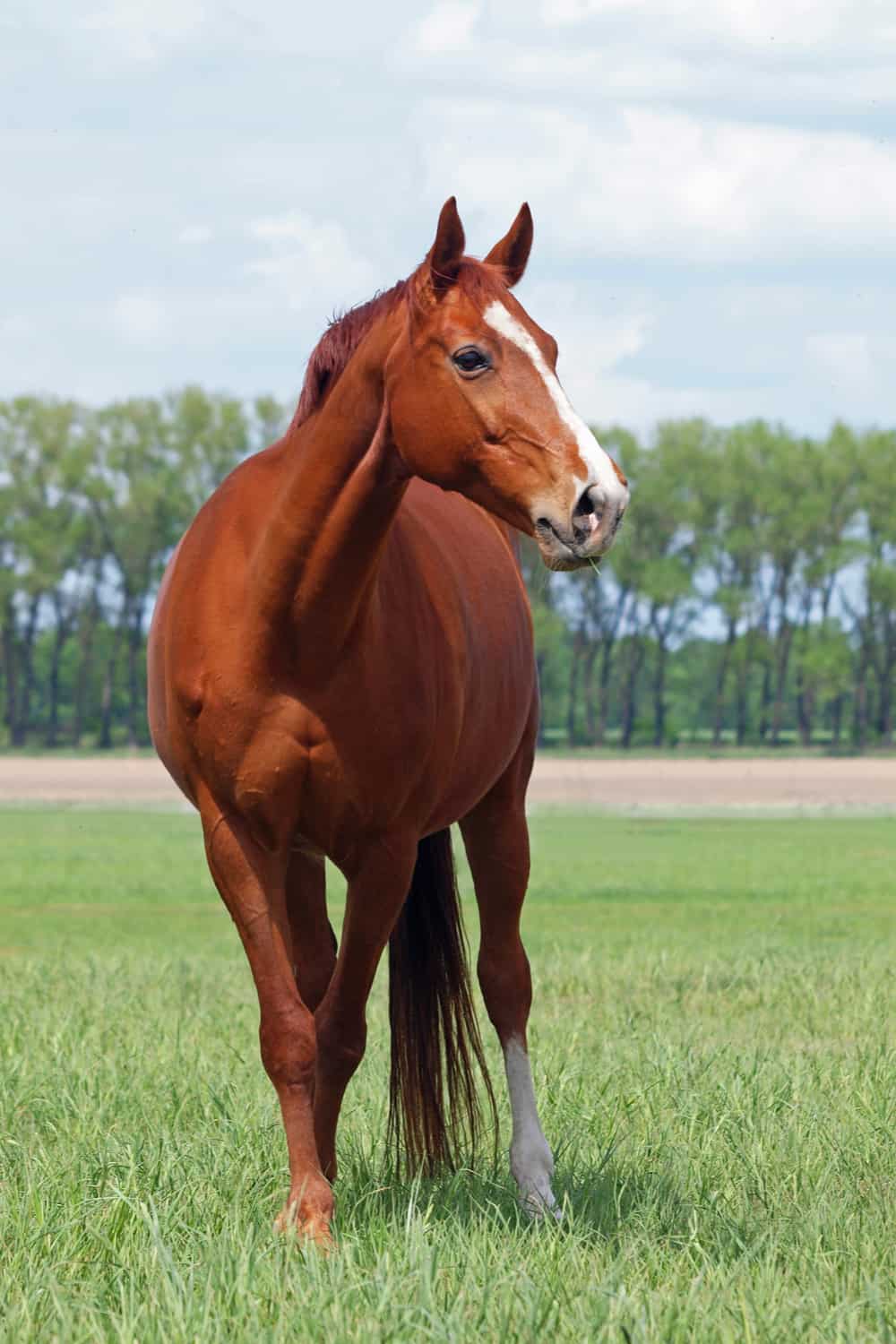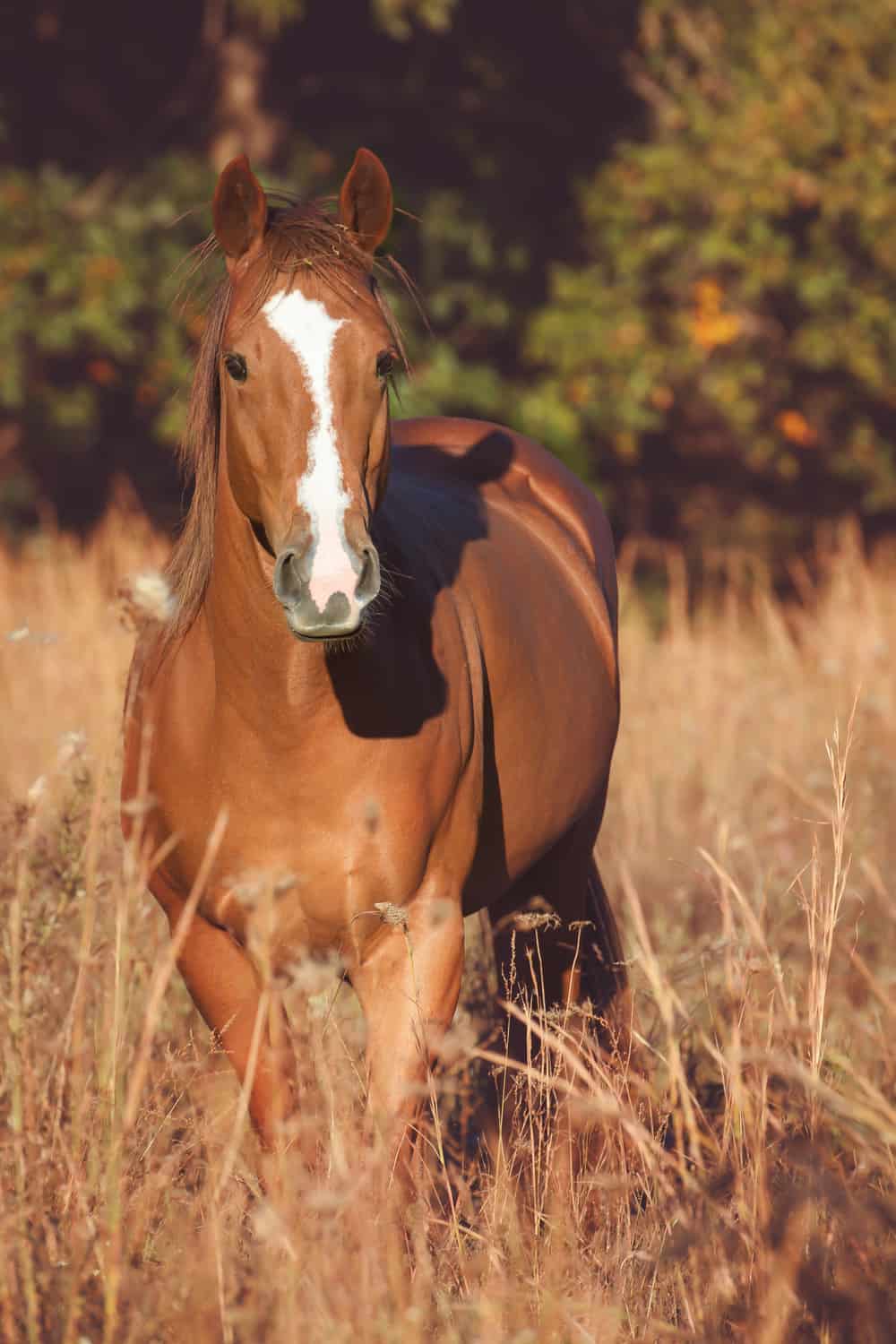To the layman’s eye, a red horse is nothing else but a red horse. But horse colors are not that easy to distinguish. There are numerous coat shades depicting horses that, at first look, may be similar. Besides the few primary colors, many come with patterns, and that can further complicate naming.
One dilemma you may have is what differentiates a sorrel horse from its chestnut cousin. The good news is that many equine lovers find looking at a horse and telling the correct color term challenging. This article will explain how to tell apart chestnut and sorrel horses.
Which Horses Are Red?
The red factor or better known as the recessive gene gives chestnuts and sorrels a red coat. To set things straight, the effects of the recessive gene won’t be evident if there’s another predominant gene. It’s the trait of the dominant gene that comes to the surface and can get observed.
In short, a red horse has two of these red genes, and that’s how it got its color. Moreover, a red-colored mare and stallion will produce red foals every single time. If there’s another present color, this will most certainly mask the recessive gene. Hence, the dominant genetic code will color the horse’s body.
Horses with black pigment in tails, manes, and legs means they have at least one copy of the dominant E allele. Conversely, the e allele will produce black pigment only in the skin and make the hair red. Hence, a horse with two copies of recessive e/e alleles won’t have any black pigment, yet a shade of red.
Overall, using the exact term to name horse colors at first glance can be daunting. Is it red roan, chestnut, sorrel, or a combination of these? Is the shade darker or lighter? All these factors can contribute to slight differences in equines with reddish and reddish-brown appearance.
Sorrel Horses
Sorrel is one of the most common colors in horse coats. Sorrels have no black pigment involved, and their body is typically a light, reddish shade of copper. Unlike chestnuts, whose mane is browner, we can set sorrels apart by their distinct red shade.
A sorrel horse can never be wine-colored or have a brownish-red appearance. Instead, its body will be pure red, regardless of whether the shade is pale or dark. Most horses boast the same color on the body, tail, and mane.
Though other markings are rare, some sorrels have occasional white spots on their faces, foreheads, or legs. In addition, blonde tails and manes shouldn’t surprise owners of sorrels. However, even a slight black marking on the body will place the horse into the chestnut group.
Chestnut Horses
Though many people confuse chestnuts with sorrels, the former ones have less of a red tint. Chestnut horses are darker than their sorrel relatives and typically have a brown shade. The body doesn’t have to be the same color as the tail and mane. Instead, these can be blonde or another hue.
In chestnut horses, the mane and tail can be so dark that many will consider them black. This blackish appearance is due to the heavy red coloring since chestnuts don’t have a black genetic code. Brightly-colored or white leg and face spots are also common.
The Ultimate Differences Between Sorrels And Chestnuts
How you name a specific horse coat color usually depends on the level of darkness or lightness. As discussed above, sorrel horses have an entirely red base color, while chestnuts coats are often brown or ‘liver’ tint.
Moreover, sorrels can have flaxen manes and tails, so don’t confuse these with other variants of red. Yet, any darker or black sheen markings throughout the body would classify the horse as being chestnut. These equines can also have a flaxen mane and tail or match the rest of the body color.
As for foals, owners can quickly determine their sorrel or chestnut tendency. Once they lose the first coat, the ultimate color will show off and remain for the rest of the horse life. Below is an explanation of the scientific background of equine body coloring.
Genetic And Phenotypic Features Of Sorrels And Chestnuts
Genetically speaking, chestnut and sorrel horses carry identical genes. Any foal adorned with a red coat has two red genes inherited from its parents. Due to the recessive nature of this gene, other present gene colors will override and replace the red shade.
For instance, a DNA test report of a sorrel or chestnut will show the ‘ee’ sequence. If the test does not prove the ‘ee’ segment, your horse has no red shade. Moreover, chestnuts are true-breeding, and two chestnut parents always produce chestnut foals.
Depending on the region horses come from, naming will vary, too. Chestnut is a more common phrasing for reddish horses of thoroughbred and Arabian breeds in Europe. Conversely, sorrel is a widely spread term in the Americas and refers to quarter horses.
How Much Do Sorrels Or Chestnuts Cost?
Horse prices can range significantly based on various factors. Depending on the age, location, and breeding, a horse can cost you as much as $100,000. However, the average price tag of a sorrel or chestnut horse is about $5,000. Here are the aspects that define the mark:
Breeding
The chestnut or sorrel bloodline will determine the ultimate price you’ll pay. In most cases, foals produced by stallions and broodmares who won races will undoubtedly cost over the odds.
In short, the bloodline and the probability of inheriting superior genes will define the prices on the horse market. Hence, even equines without unique abilities or body disposition can be hefty if their parents or grandparents had extraordinary achievements.
Age And Condition
Other crucial factors that impact the price are age and condition. The prime period of horses can range between seven and 14 years, with most lifespans stretching to three decades. Typically, older horses will cost you less, but their condition will set the final price.
Health
Since health is paramount for the horse you’re buying, getting it checked by a veterinarian is a must. A healthy horse will enable you to ride it both professionally and for leisure. As opposed, horses with injuries or diseases will incur medical bills and reduce the equine lifespan and mobility.
Organizational Divisions
Establishing the correct terminology based on coat color can lead to arguments between equine lovers. Figuring out the difference is particularly questionable when people decide whether a horse is a sorrel or chestnut color.
Besides science, many names come down to opinions and personal preferences. For instance, western horse enthusiasts prefer to name red horses sorrels, whereas Englishmen go for chestnuts.
Moreover, the coat color can change depending on the environment, season, or temperature. Grooming techniques like body clipping can also impact horse coat shades.
As for official organizations, the American Quarter Horse Association uses both terms and refers to sorrels as a copper-red chestnut color.
The Jockey Club Registry describes all light brown and red thoroughbreds as chestnuts. Their Registry doesn’t include the sorrel term. Even the Arabian Horse Association and the U.S. Trotting Association don’t recognize sorrels as a separate group.
Some organizations don’t differentiate between sorrels and chestnuts on purpose to avoid unnecessary complications. These choose chestnut or sorrel to refer to reddish and brown colors that don’t belong to the ‘bay’ category.
The Most Impressive Sorrels/Chestnuts In Horseracing History
Secretariat was the most legendary chestnut racehorse of all times. The thoroughbred that shattered numerous course records had three white socks and a tapered white spot on his forehead. Secretariat left spectators speechless by becoming the first Triple Crown winner in 25 years.
In 1973, the stallion set and is still the holder of the fastest time in all three races. At Belmont Stakes, Secretariat bested his opponent by 31 lengths.
Over the following decades, Secretariat’s chestnut genes produced hundreds of successful offspring. Over 300 of his descendants won at the tracks, while 54 became stakes winners.
Dash for Cash is probably the most renowned sorrel horse. Thanks to the 21 wins in 25 of his races, this quarter earned $500,000. When his racing career finished, Dash for Cash sired some of the best racing horses and broodmares in the equine world. His 145 stakes winners generated almost $40,000,000.
Bottom Line
The difference between sorrels and chestnuts is that the first type is lighter, more coppery, red with possible white markings. The second has a darker or richer red coat. In a genetic sense, both variants have recessive genes that give the reddish tint. Other color genes in the parents will outweigh the red.
Were you aware of these nuances of red in equine coats? Hopefully, now you have a clear understanding of what a sorrel vs. chestnut horse is. Don’t forget to check our website for more insight into horse-related matters.













